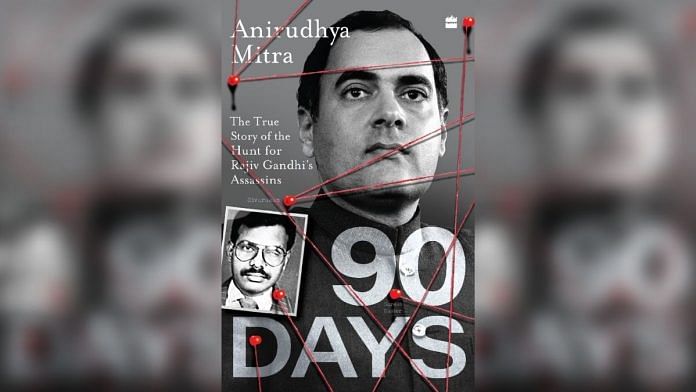New Delhi: Journalist-turned-filmmaker Anirudhya Mitra’s new book unravels the complex plot hatched by the Liberation Tigers of Tamil Eelam (LTTE) to ensure that former prime minister Rajiv Gandhi did not return to power in the 1991 Indian general elections.
The LTTE high command chose Sivarasan for overseeing the assassination. By May, the plan was already in place, and a suitable human bomb, Dhanu, was chosen for the act. On 21 May 1991 in Sriperumbudur, she garlanded Gandhi and bowed to touch his feet only to never get up. The ensuing explosion killed Gandhi, herself and 14 others.
Through this book, Mitra explores unanswered questions about the assassination such as the Central Bureau of Investigation’s (CBI) pursuit of the responsible assassins including the mastermind, Sivarasan, to his final hideout and the consequent cyanide-induced mass suicide.
Published by HarperCollins, the book, titled ‘Ninety Days: The True Story of the Hunt for Rajiv Gandhi’s Assassins,’ by Anirudhya Mitra will be released on 12 July on ‘Softcover’, ThePrint’s online venue to launch non-fiction books.
The book is set during Mitra’s successful stint of news reporting at the Times of India and the India Today magazine (1982–93). Here, he broke several stories, including the Rajiv Gandhi assassination; the Bofors gun deal; the money laundering operation by the BCCI bank that led to its worldwide closure; corruption in the judiciary among others. Mitra, who was working at India Today at the time of the assassination, was able to use his contacts with former officials during the three decades it took him to give the book its final form.
He later moved to writing and creating television series with UTV in Mumbai in 1994. The Hindi film Tahaan, of which Mitra was a co-writer, won major awards at festivals, including the London Independent Film Festival and the International Istanbul Film Festival.
The journalist-turned-filmmaker said, “I have written this book as a mark of respect for the stellar work of the officials who cracked this case and for the generation of today—to help them gain a deeper understanding of the events and the attempted cover-up that followed—of what was surely a turning point in our nation’s history.”
The story of the assassination and the investigation which followed is a matter of public record and therefore well known. Mitra constructs a cogent picture of what transpired using the facts of the case. According to him, the special investigation team (SIT) headed by CBI officer D.R. Karthikeyan was facing an organisation that was always one step ahead until the very end, a fact which haunts many of the officers to this day.
The book is filled with unique observations such as the curious case of a photographer called Haribabu, hired by the LTTE, for the purpose of capturing the moment Dhanu garlanded Gandhi at the rally. Haribabu was unaware of the plot and did not survive the blast but his camera along with its contents did miraculously survive. If the camera had not survived, identifying the assassins would have been an uphill task. Ten images from the camera provided a head start to the investigative agencies which then quickly identified those responsible for the blast.
Mitra also highlights instances of ‘lack of professionalism’ on the part of investigative authorities which jeopardised the secrecy of the probe. In the end, Sivarasan and his co-conspirators could not be captured alive despite the best efforts of the National Security Guard. Mitra also contends that the SIT may have overlooked plausible foreign links to the assassination.
Also read: New book by historian Stephen Barker tells story of only Sikh to fly with Royal Air Force in WWI






